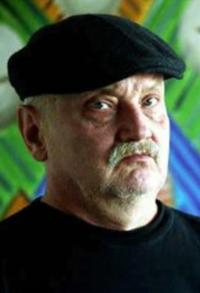The exemplar must be surpassed

Stáhnout obrázek
Jiří Sopko was born on 20 February 1942 into a Czech-Slovak family in Subcarpathian Ruthenia. Shortly before the arrival of the Russian army, his family fled to Slovakia, where his father worked as a high-ranking official. After 1950 his father was forced to take up factory work, and the witness and his mother and siblings moved to Kladno. Jiří Sopko attended a secondary school of arts at Hollar in Prague, which he followed up with studies of painting at the Academy of Fine Arts. The year 1968 meant an end to any chance at exhibiting his works for a long time. He travelled to France but returned to Czechoslovakia six months later. He worked as a restorer and gradually began exhibiting again in small regional galleries. In 1987 he reacted to the new art group Tvrdohlaví (Hard-headed) by co-founding the free art association 12/15 Pozdě, ale přece (12/15 Better late than never). In late 1989, based on the requests of students, he started teaching at the Academy of Fine Arts, where he held the office of rector from 2002 to 2010. He continues to head a painting studio there.
